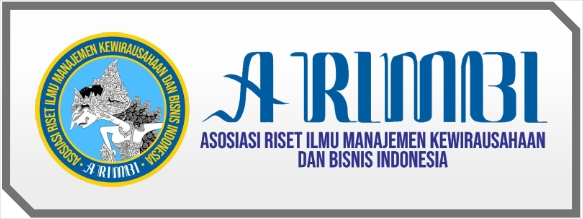FINANCIAL LITERACY, SOCIAL INFLUENCE AND THE USE OF DIGITAL PAYMENTS: A LITERATURE REVIEW
DOI:
https://doi.org/10.55606/iceb.v1i2.124Keywords:
Financial literacy, social influence, fintech, digital payment.Abstract
This study investigated the role of financial literacy and social influence in the actual usage of digital payment as a fintech service systems in an effort to gather information and the degree of risk that users will experience, taking into account the advantages received. This study utilized a descriptive qualitative strategy coupled with a literature review method for data collection, namely the acquisition of data from publications and journals pertaining to the usage of digital payment systems. The data analysis technique employs the approach of deriving conclusions by objectively, systematically, and generally recognizing the many specific qualities of a message. The findings indicated that financial literacy and social influence have a substantial impact on the utilization of digital payment systems. The usage of digital payment services as a type of risky financial behavior raises knowledge and comprehension of financial goods, which will affect judgments on whether or not to utilize these products. This study is limited to a literature review and paves the way for future empirical studies to analyze the elements and dimensions of financial literacy and social influence in the usage of digital payment services in more depth.
References
Alalwan, A. A., Dwivedi, Y. K., & Rana, N. P. (2017). Factors influencing adoption of mobile banking by Jordanian bank customers: Extending UTAUT2 with trust. International Journal of Information Management, 37(3), 99–110. https://doi.org/10.1016/j.ijinfomgt.2017.01.002
Albeerdy, M. I., & Gharleghi, B. (2015). Determinants of the Financial Literacy Among College Students in Malaysia. International Journal of Business Administration, 6(3). https://doi.org/10.5430/ijba.v6n3p15
Ameen, N., Shah, M. H., Sims, J., Choudrie, J., & Willis, R. (2020). Are there peas in a pod when considering mobile phone and mobile applications use: A quantitative study. Journal of Retailing and Consumer Services, 55, 102067. https://doi.org/10.1016/j.jretconser.2020.102067
Anbar, A., & Eker, M. (2010). an Empirical Investigation for Determining of the Relation Between Personal Financial Risk Tolerance and Demographic Characteristic. Ege Akademik Bakis (Ege Academic Review), 10(2), 503–522. https://doi.org/10.21121/eab.2010219633
Aren, S., & Aydemir, S. D. (2014). Some Considerations on Emotional Intelligence. Journal of Global Strategic Management, 8(1), 49–56. https://doi.org/10.20460/jgsm.2014815652
Asaad, C. T. (2015). Financial Literacy and Financial Behavior: Assessing Knowledge and Confidence. Financial Services Review, 24(2), 101–107.
Atkinson, A., & Messy, F.-A. (2012). Measuring Financial Literacy: Results of the OECD Infe Pilot Study. In OECD Working Papers (No. 15; Issue 15). https://doi.org/https://doi.org/10.1787/bb2cd70c-en
Bakrie, C. R., Delanova, M. O., & Yani, Y. M. (2022). Perekonomian Negara Kawasan Asia Tenggara. Jurnal Caraka Prabu, 6(1), 65–86.
Bank Indonesia, D. K. (2021). Empat Tantangan dan Respons Bank Sentral untuk Pemulihan Ekonomi yang Lebih Kuat. Siaran Pers Bank Indonesia. https://www.bi.go.id/id/publikasi/ruang-media/news-release/Pages/sp_2322421.aspx
Beckmann, E. (2013). Financial Literacy and Household Savings in Romania. Numeracy, 6(2). https://doi.org/10.5038/1936-4660.6.2.9
Beldad, A. D., & Hegner, S. M. (2017). Expanding the Technology Acceptance Model with the Inclusion of Trust, Social Influence, and Health Valuation to Determine the Predictors of German Users’ Willingness to Continue using a Fitness App: A Structural Equation Modeling Approach. International Journal of Human-Computer Interaction, 34(9), 882–893. https://doi.org/10.1080/10447318.2017.1403220
Bharadwaj, P., Jack, W., & Suri, T. (2019). Fintech and Household Resilience to Shocks: Evidence from Digital Loans in Kenya (Issue 25604). http://www.nber.org/papers/w25604
BI. (2020a). Sekilas Sistem Pembayaran di Indonesia. https://www.bi.go.id/id/fungsi-utama/sistem-pembayaran/default.aspx
BI, F. O. (2020b). Financial Technology: Perkembangan dan Respons Kebijakan Bank Indonesia. In Bank Indonesia. https://doi.org/10.4324/9780429344015-2
Brown, S., & Taylor, K. (2014). Household finances and the “Big Five” personality traits. Journal of Economic Psychology, 45, 197–212. https://doi.org/10.1016/j.joep.2014.10.006
Chen, M. A., Wu, Q., & Yang, B. (2019). How Valuable Is FinTech Innovation? Review of Financial Studies, 32(5), 2062–2106. https://doi.org/10.1093/rfs/hhy130
Cheung, B. (2020). Consumer Adoption Of FinTech During The COVID-19 Pandemic. https://environics.ca/article/consumer-adoption-of-fintech-during-the-covid-19-
Cole, S., Sampson, T., & Zia, B. (2011). Prices or Knowledge? What Drives the Demand for Financial Services in Developing Countries. Journal of Finance, LXVI(6), 1933–1967.
Dhar, V., & Stein, R. M. (2017). Economic and business dimensions: FinTech platforms and strategy. In Communications of the ACM (Vol. 60, Issue 10, pp. 32–35). https://doi.org/10.1145/3132726
Diacon, S. (2004). Investment Risk Perceptions: Do Consumers and Advisers Agree? International Journal of Bank Marketing, 22(3), 180–199. https://doi.org/10.1108/02652320410530304
Fishbein, M., & Ajzen, I. (1975). Belief, Attitude, Intention, and Behavior: An Introduction to Theory and Research. Philosophy and Rhetoric, 10(2), 181–202.
Grable, J. E., & Joo, S. (2000). A Cross-Disciplinary Examination off Financial Risk Tolerance. In Consumer Interests Annual (Vol. 46, Issue 1, pp. 151–157). http://www.consumerinterests.org/assets/docs/CIA/CIA2000/grablejoo.pdf
Grover, P., & Kar, A. K. (2018). User engagement for mobile payment service providers – introducing the social media engagement model. Journal of Retailing and Consumer Services, 53, 101718. https://doi.org/10.1016/j.jretconser.2018.12.002
Gudmunson, C. G., & Danes, S. M. (2011). Family Financial Socialization: Theory and Critical Review. Journal of Family and Economic Issues, 32(4), 644–667. https://doi.org/10.1007/s10834-011-9275
Guiso, L., & Jappelli, T. (2005). Awareness and stock market participation. Review of Finance, 9(4), 537–567. https://doi.org/10.1007/s10679-005-5000-8
Guiso, L., & Jappelli, T. (2008). Financial Literacy and Portfolio Diversification. In EUI Working Papers (Vol. 31). https://doi.org/10.1177/0894318402239072
He, D., Leckow, R., Haksar, V., Mancini-Griffoli, T., Jenkinson, N., Kashima, M., Khiaonarong, T., Rochon, C., & Tourpe, H. (2017). Fintech and Financial Services: Initial Considerations. International Monetary Fund, 49. https://www.imf.org/~/media/Files/Publications/SDN/2017/sdn1705.ashx
Hilgert, M. A., Hogarth, J. M., & Beverly, S. G. (2003). Household Financial Management: the Connection Between Knowledge and Behavior. Federal Reserve Bulletin, 59(Jul), 309–322. http://www.federalreserve.gov/pubs/bulletin/2003/ 0703lead.pdf.
Hong, H., Kubik, J. D., & Stein, J. C. (2004). Social Interaction and Stock-Market Participation. The Journal of Finance •, LIX(1), 137–163.
Hsiao, Y. J., & Tsai, W. C. (2018). Financial literacy and participation in the derivatives markets. Journal of Banking and Finance, 88, 15–29. https://doi.org/10.1016/j.jbankfin.2017.11.006
Huston, S. J. (2010). Measuring Financial Literacy. Journal of Consumer Affairs, 44(2), 296–316. https://doi.org/10.1111/j.1745-6606.2010.01170.x
Josephine, S. (2021). ShopBack Insight: Survei Perilaku Pengguna E-Commerce Q1 2021. ShopBack Indonesia. https://www.shopback.co.id/katashopback/shopback-insight-survei-perilaku-pengguna-e-commerce-q1-2021
Klapper, L., Lusardi, A., & Panos, G. A. (2013). Financial literacy and its consequences: Evidence from Russia during the financial crisis. Journal of Banking and Finance, 37(10), 3904–3923. https://doi.org/10.1016/j.jbankfin.2013.07.014
Koenig-Lewis, N., Marquet, M., Palmer, A., & Zhao, A. L. (2015). Enjoyment and Social Influence: Predicting Mobile Payment Adoption. The Service Industries Journal, 35(10), 537–554. https://doi.org/10.1080/02642069.2015.1043278
Kurniawan, A. (2022). Hikmah Pandemi Covid-19 Dompet Digital Naik Daun. Kementerian Keuangan Republik Indonesia. https://www.djkn.kemenkeu.go.id/kpknl-semarang/baca-artikel/14974/Hikmah-Pandemi-Covid-19-Dompet-Digital-Naik-Daun.html
Leong, C., Tan, B., Xiao, X., Tan, F. T. C., & Sun, Y. (2017). Nurturing a FinTech Ecosystem: The Case of a Youth Microloan Startup in China. International Journal of Information Management, 37(2), 92–97. https://doi.org/10.1016/j.ijinfomgt.2016.11.006
Lusardi, A., & Mitchell, O. S. (2006). Financial literacy and planning: implications for retirement wellbeing", Pension Research Council Working Paper no. 1. Philadelphia, PA: The Wharton School, University of …. http://scholar.google.com.my/scholar?q=Implications+for++retirement+wellbeing&btnG=&hl=en&as_sdt=0%2C5&as_ylo=2006&as_yhi=2006.
Lusardi, A., & Mitchell, O. S. (2007). Financial Literacy and Retirement Preparedness : Evidence and Implications for Financial Education. Business Economics, January, 35–44.
Lusardi, A., & Mitchell, O. S. (2011). Financial Literacy and Planning: Implications for Retirement Wellbeing. In NBER WORKING PAPER SERIES (17078). http://www.nber.org/papers/w17078
Lusardi, A., Mitchell, O. S., & Curto, V. (2010). Financial Literacy Among the Young: Evidence and Implications for Consumer Policy. SSRN Electronic Journal, 1–35. https://doi.org/10.2139/ssrn.1459141
Mandell, L. (2008). Financial Literacy of Young American Adults: Results of the 2008 National Jump$tart Coalition Survey of High School Seniors and College Students. In Jump$tart Coalition® for Personal Financial Literacy. For the Jump$tart Coalition® for Personal Financial Literacy.
Moreno-Herrero, D., Salas-Velasco, M., & Campillo, J. J. (2018). Factors that influence the level of financial literacy among young people: The role of parental engagement and students’ experiences with money matters. Children and Youth Services Review, 95, 334–351. https://doi.org/10.1016/j.childyouth.2018.10.042
Morgan, P. J., Huang, B., & Trinh, L. Q. (2019). The Need to Promote Digital Financial Literacy for the Digital Age - G20 Insights. G20 2019 Japan, 1–9. https://www.g20-insights.org/policy_briefs/the-need-to-promote-digital-financial-literacy-for-the-digital-age-2
Mouna, A., & Anis, J. (2016). Financial literacy in Tunisia: Its determinants and its implications on investment behavior. Research in International Business and Finance, 39, 568–577. https://doi.org/10.1016/j.ribaf.2016.09.018
Nemeth, E., & Zsoter, B. (2017). Personality, Attitude and Behavioural Components of Financial Literacy: A Comparative Analysis. Journal of Economics and Behavioral Studies, 9(2), 46–57. https://doi.org/https://doi. org/10.22610/jebs.v9i2.1649
Octaviano, A. (2021). Bantu UMKM, penyelenggara fintech berikan 55 program insentif selama pandemi Covid-19. Kontan.Co.Id. https://keuangan.kontan.co.id/news/bantu-umkm-penyelenggara-fintech-berikan-55-program-insentif-selama-pandemi-covid-19
OECD. (2018). G20/OECD INFE Policy Guidance on Digitalisation and Financial Literacy. http://www.oecd.org/finance/G20-OECD-INFE-Policy-Guidance-Digitalisation-Financial-Literacy-2018.pdf
OECD. (2020). OECD/INFE 2020 International Survey of Adult Financial Literacy. www.oecd.org/financial/education/launchoftheoecdinfeglobalfinancialliteracysurveyreport.htm
OJK. (2019). Literasi Keuangan. Ojk.Go.Id. https://www.ojk.go.id/id/kanal/edukasi-dan-perlindungan-konsumen/Pages/Literasi-Keuangan.aspx
Pak, O., & Mahmood, M. (2015). Impact of personality on risk tolerance and investment decisions: A study on potential investors of Kazakhstan. International Journal of Commerce and Management, 25(4), 370–384. https://doi.org/10.1108/IJCoMA-01-2013-0002
Pollari, I., & Ruddenklau, A. (2019). KPMG The Pulse of Fintech 2019 - Biannual global analysis of investment in fintech. In KPMG-Fintech-report (Issue July).
Puschmann, T. (2017). Fintech. Business and Information Systems Engineering, 59(1), 69–76. https://doi.org/10.1007/s12599-017-0464-6
Rahi, S., Othman Mansour, M. M., Alghizzawi, M., & Alnaser, F. M. (2019). Integration of UTAUT model in internet banking adoption context: The mediating role of performance expectancy and effort expectancy. Journal of Research in Interactive Marketing, 13(3), 411–435. https://doi.org/10.1108/JRIM-02-2018-0032
Rizkinaswara, L. (2020). Ekonomi Digital jadi Penopang Perekonomian di Tengah Pandemi. Direktorat Jenderal Aplikasi Informatika Kementerian Komunikasi Dan Informatika RI. https://aptika.kominfo.go.id/2020/09/ekonomi-digital-jadi-penopang-perekonomian-di-tengah-pandemi
Robb, C. A., & Woodyard, A. S. (2011). Financial Knowledge and Best Practice Behavior. Journal of Financial Counseling and Planning, 22(1), 60–70.
Rudeloff, M. (2019). The influence of informal learning opportunities on adolescents’ financial literacy. Empirical Research in Vocational Education and Training, 11(1). https://doi.org/10.1186/s40461-019-0086-y
Scheresberg, C. de B. (2013). Financial Literacy and Financial Behavior among Young Adults: Evidence and Implications. Numeracy Scholars Commons, 6(2), 1–23. https://doi.org/http://dx.doi.org/10.5038/1936-4660.6.2.5
Shin, D.-H. (2010). Modeling the Interaction of Users and Mobile Payment System: Conceptual Framework. International Journal of Human-Computer Interaction, 26(10), 917–940. https://doi.org/10.1080/10447318.2010.502098
Singh, N., & Sinha, N. (2020). How perceived trust mediates merchant’s intention to use a mobile wallet technology. Journal of Retailing and Consumer Services, 52, 101894. https://doi.org/10.1016/j.jretconser.2019.101894
Sundarasen, S. D. D., & Rahman, M. S. (2017). Attitude Towards Money: Mediation to Money Management. Academy of Accounting and Financial Studies Journal, 21(1), 1–17.
Susdiani, L. (2017). Pengaruh Financial Literacy dan Financial Experience Terhadap Perilaku Perencanaan Investasi PNS Di Kota Padang. Journal Pembangunan Nagari, 2(1), 61–74.
Thompson, R. L., Higgins, C. A., & Howell, J. M. (1991). Personal Computing: Toward a Conceptual Model of Utilization. MIS Quarterly, 15(1), 125–143.
Van Rooij, M., Kool, C. J. M., & Prast, H. M. (2007). Risk-return preferences in the pension domain: Are people able to choose? Journal of Public Economics, 91(3–4), 701–722. https://doi.org/10.1016/j.jpubeco.2006.08.003
Van Rooij, M., Lusardi, A., & Alessie, R. (2011). Financial literacy and stock market participation. Journal of Financial Economics, 101(2), 449–472. https://doi.org/10.1016/j.jfineco.2011.03.006
Venkatesh, V., & Davis, F. D. (2000). A Theoretical Extension of the Technology Acceptance Model: Four Longitudinal Field Studies. Management Science, 46(2), 186–204. https://doi.org/https://doi.org/10.1287/mnsc.46.2.186.11926
Venkatesh, V., & Morris, M. G. (2000). Why Don’t Men Ever Stop to Ask for Directions? Gender, Social Influence, and Their Role in Technology Acceptance and Usage Behavior. MIS Quarterly: Management Information Systems, 24(1), 115–136. https://doi.org/10.2307/3250981
Venkatesh, V., Morris, M. G., Davis, G. B., & Davis, F. D. (2003). User Acceptance of Information Technology: Toward a Unified View. MIS Quarterly, 27(3), 425–478.
Vissing-Jorgensen, A. (2003). Perspectives on Behavioral Finance: Does “Irrationality” Disappear with Wealth? Evidence from Expectations and Actions. NBER Macroeconomics Annual, 18, 57. https://doi.org/10.2139/ssrn.417421
Vlaev, I., Chater, N., & Stewart, N. (2009). Dimensionality of Risk Perception: Factors Affecting Consumer Understanding and Evaluation of Financial Risk. Journal of Behavioral Finance, 10, 158–181.
Wang, M., Keller, C., & Siegrist, M. (2011). The Less You Know, The More You Are Afraid of-A Survey on Risk Perceptions of Investment Products. Journal of Behavioral Finance, 12(1), 9–19. https://doi.org/10.1080/15427560.2011.548760
Xiao, J. J., & O’Neill, B. (2018). Mental accounting and behavioural hierarchy: Understanding consumer budgeting behaviour. International Journal of Consumer Studies, 42(4), 448–459. https://doi.org/10.1111/ijcs.12445
Yoshino, N., Morgan, P. J., & Long, T. Q. (2020). Financial Literacy and Fintech Adoption in Japan. In Asian Development Bank Institute Working Paper 1095 (Issue 1095). https://www.adb.org/publications/financial-literacy-fintech-adoption-japan
















